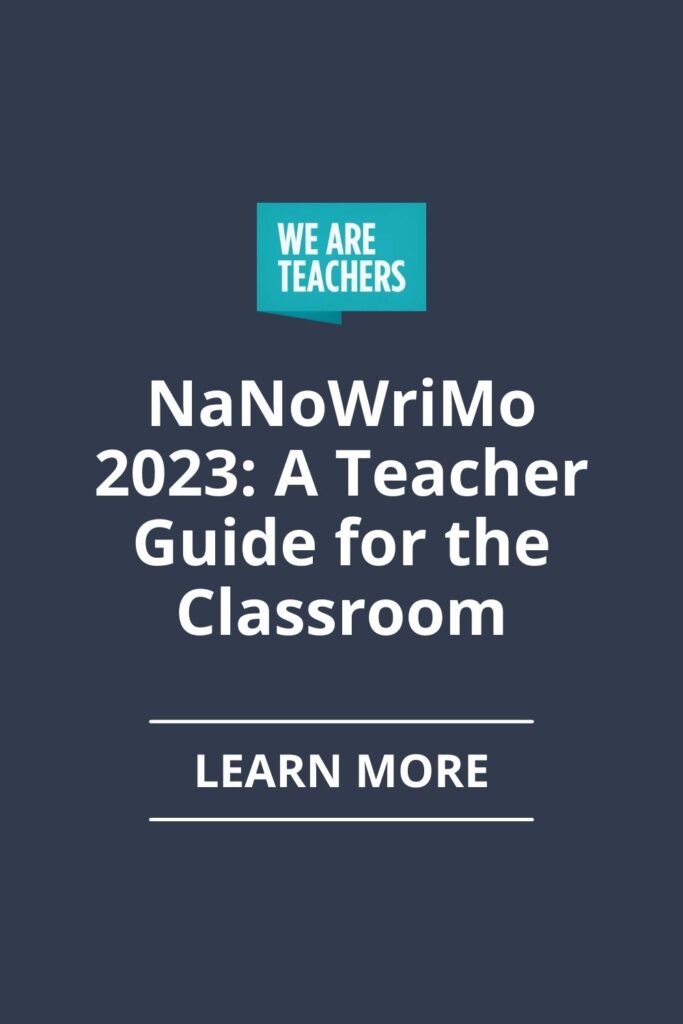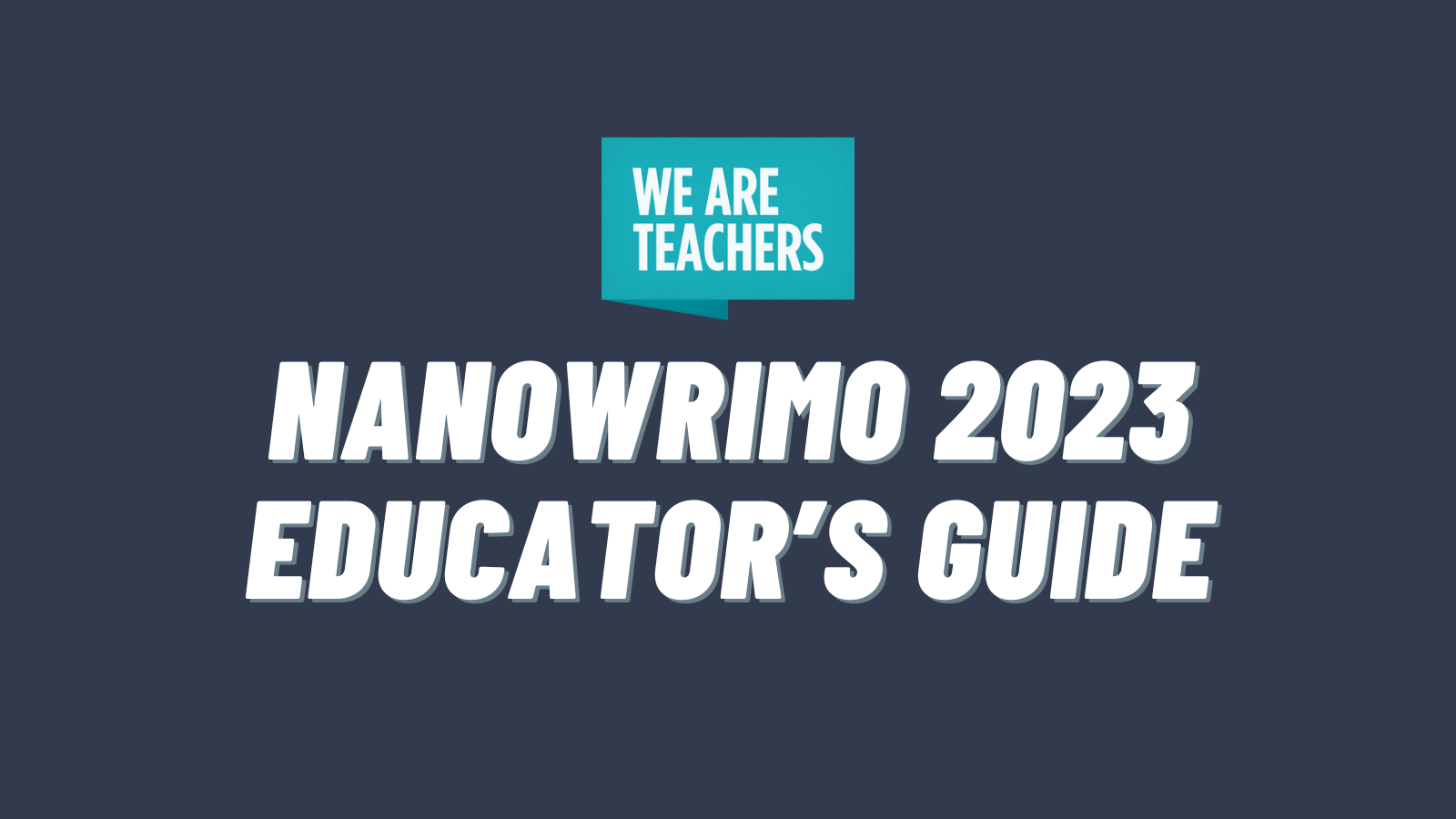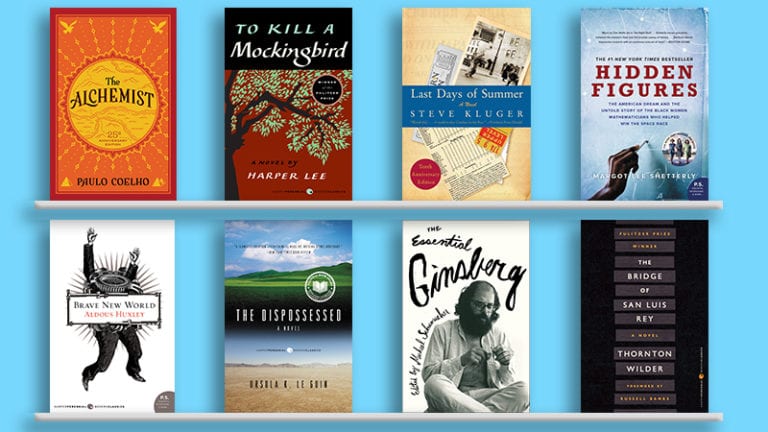Each November, aspiring writers around the world set themselves a challenging goal: to write the complete first draft of a novel in one month. It started small, but NaNoWriMo has become a huge event, with well-known authors joining the fun. It’s a terrific project for schools and classrooms, so learn how to join NaNoWriMo 2023 and turn your students into novelists!
What is NaNoWriMo?
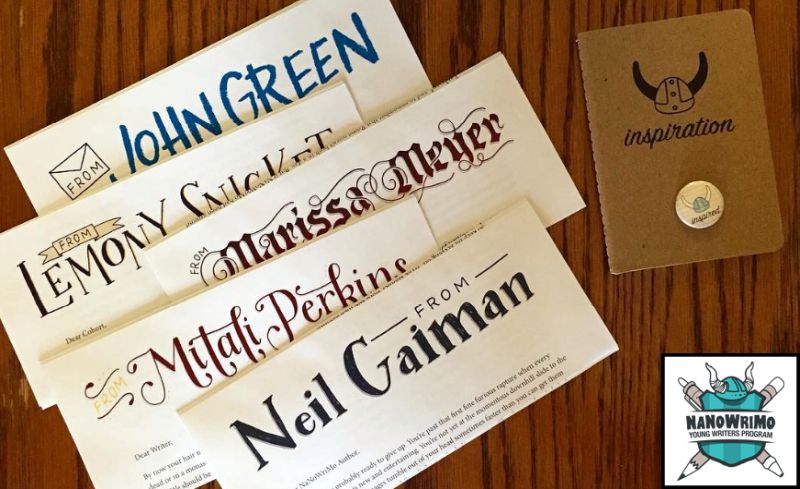
National Novel Writing Month (NaNoWriMo) began in 1999 with 21 participants, each with one goal: write the first draft of a novel (at least 50,000 words) in one month. They worked to keep each other on task, focusing only on writing—no revisions, no editing, nothing more than getting their initial ideas down onto the page and moving forward every day. As Chris Baty, NaNoWriMo founder, says: “Write first! Ask questions later!”
Within just a few years, the local group had spread nationwide, with thousands of participants. NaNoWriMo established a website, with tracking features, writing inspiration, forums, and more. Well-known authors like Erin Morgenstern joined the challenge, working on their own novels and offering pep talks to participants. In 2022, more than 413,000 writers participated, with over 50,000 people completing their goal.
Learn more about NaNoWriMo here.
NaNoWriMo Young Writers Program
In 2004, NaNoWriMo started a program specifically for young writers and their teachers. Rather than requiring young participants to meet the extremely challenging 50,000-word goal, the Young Writers Program lets students set their own word-count target. They write their novels directly on the site, with a tracker to count words and award achievement badges along the way.
Teachers can set up a virtual classroom to read and track their students’ progress. They can also take advantage of lesson plans, workbooks, and more writing tools for the classroom. The entire program is completely free, making this a valuable resource for all ELA teachers. In 2022, 85,000 students and educators joined NaNoWriMo, and more than 21,000 young authors met their writing goal. They hope to exceed those numbers for NaNoWriMo 2023!
Explore the NaNoWriMo Young Writers Program here.
Why should teachers encourage students to join NaNoWriMo?
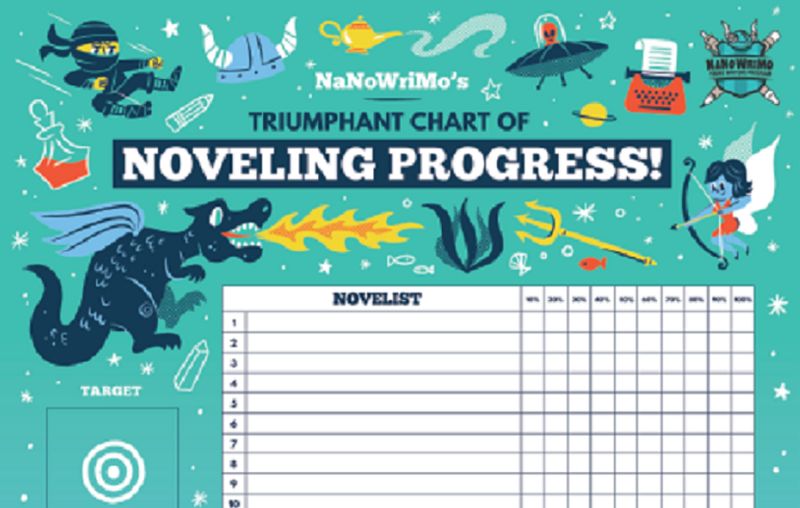
NaNoWriMo is a natural fit for those who already love creative writing. But every student can benefit from joining the program. For one thing, it’s about setting and achieving a goal—knowing that with a little discipline, you can accomplish great things. And by incorporating this project into their lesson plans, teachers can give students the time and encouragement they need to try something new.
It’s also OK if students try this project out and don’t succeed. They’ll benefit from seeing other inspiring writers at work, or meeting fellow young authors on the forums (as long as they’re 13 or older). Even if they themselves only write a few words each day, it’s still a chance to give their creativity free rein.
Because one of the best parts of NaNoWriMo is the lack of judgement, editing and revision comes later in the process. For one month, writers are focused simply on getting ideas out of their heads and down onto the page. Instead of stopping to second-guess themselves, participants merely pour out their words into characters, plots, and themes. And they have the support of a worldwide community of fellow writers along the way.
How can teachers use NaNoWriMo in the classroom?
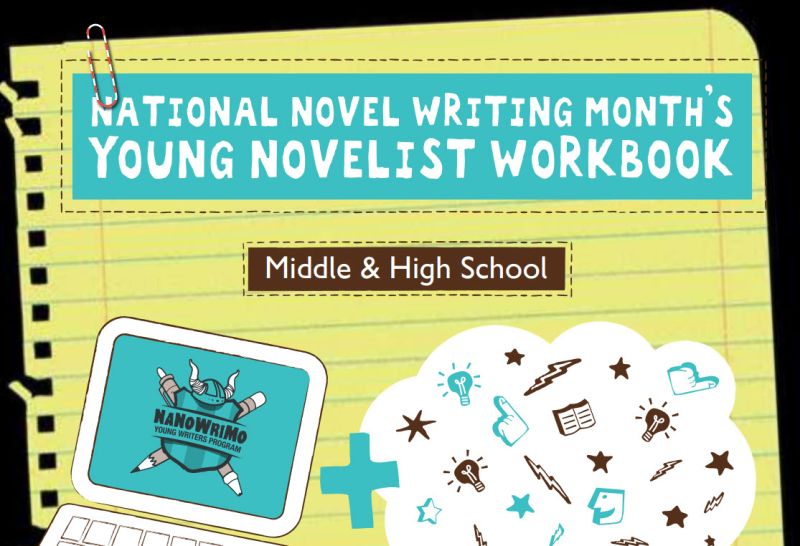
Teachers can just let their students know about NaNoWriMo and encourage them to participate. But they can also turn this challenge into a month-long project for all students.
For your youngest students, consider writing one novel as a class-wide experience. Students can work together to brainstorm characters, decide plot points, and help move the writing along a few sentences each day. Your word goal might be very short, but you’ll demonstrate the overall writing process to young minds.
For older students, you can take full advantage of all the tools available. Set up a virtual classroom, and help each student set a word-count goal. Give them some time to write in class, using the Dare Machine challenges as daily writing prompts. Or assign some writing outside class, setting your own goals for your students outside the official NaNoWriMo program.
Be sure to explore the NaNoWriMo Educator Resources. You’ll find K-12 lesson plans and complete workbooks, all yours to use for free. You can even get a free classroom kit with a motivational progress chart, writing poster, and stickers. Learn more about the resources here.
At the end of the month, your students will have complete first drafts of a novel! In the months ahead, you can continue the writing process with them, helping them revise, edit, and improve what they’ve written.
Get started on the Educators page here.
How do students participate in NaNoWriMo 2023?
Signing up for NaNoWriMo 2023 is simple (and free!). Students 13 and older can register with their own email, while those under 13 will use a parent or guardian’s. All students will need their parent, guardian, or teacher to review and agree to the terms and conditions to establish an account. Start the process here.
Once they have an account, participants can customize their profile however they like, making it a reflection of themselves as a writer. Then, they’re ready to start writing.
To join the NaNoWriMo 2023 challenge, writers need to set a word-count goal. It’s OK to be ambitious! In fact, the program encourages young authors to reassess their goal halfway through the month, adjusting it as needed. Need help setting a goal? Start here.
Then, students just need to make time to write, preferably a little bit every day. They can write directly on the site, using the tools provided. The site automatically tracks their word count, keeping them up-to-date on their progress. If they get stuck, they can use features like Word Sprint or take the Dare Machine challenge, which offers prompts and other ideas to shake off writer’s block.
Throughout the month, kids 13 and older can join the NaNoWriMo Young Writers forums. Here, they can exchange ideas, seek inspiration, and find new friends in the writing community. At the end of the month, writers who reach their personal goals will be declared NanoWriMo2023 winners, and they’ll receive a winner certificate and badge they can display on their profile.
What happens after NaNoWriMo 2023 ends?
November 30 doesn’t have to be the end of the writing project. Everything participants have written stays on the site as long as they have an account. They can go back in and edit their work, download a PDF, turn their novel into a real book, and more. NaNoWriMo lets you set yourself a new writing challenge anytime, so student writers can keep using the site as much as they want.
In January and February, the site hosts “Now What?” events to help authors edit, revise, and finish the novel-writing process. They also hold Camp NaNoWriMo events in April and July. This is a vibrant community that stays active year-round, encouraging authors around the world to create the novels they’ve always dreamed of writing.
Is your classroom or school planning to participate in NaNoWriMo 2023? Come share your ideas or ask for advice in the We Are Teachers HELPLINE group on Facebook.
Plus, The Best Student Writing Contests for 2023-24!
